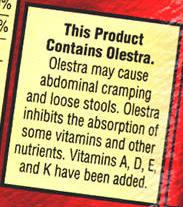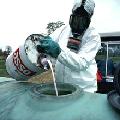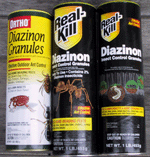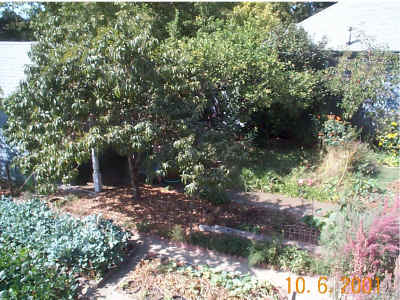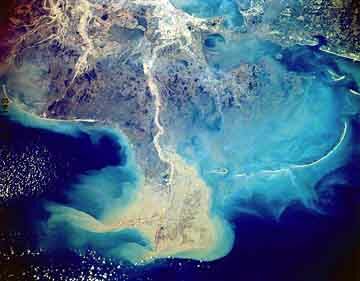Index of the
Overcoming Consumerism>
website
UPDATED OCT 2021
This page is about:
Learning how and why to grow some of your own organic food and reasons
why that is important for you, your family and society.
You want to talk
about
a
truly useful skill-set?
Learn how to grow some or most of
your own food or teach others how to do the same.
If you have
access to a deck, a roof, a patch of ground no
larger
than a flower bed or far more space, you can,
with some of the resources listed on this page
learn to feed
yourself and others. Any reasonably intelligent
person
with time or patience or internet access can learn
as
much about soil and gardening as the most
experienced
farmers knew a hundred years ago--putting it into
practice
takes time however, today is the day to begin a
garden.
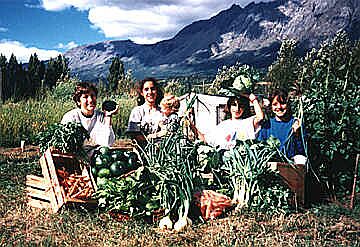
There is no act more gratifying, more basic,
more liberating, than to coax food from the Earth. Time
and the rhythms of nature become the ultimate template by
which to live. Do it just to know that you can do it, or
do it just to live, or do it to save money.
Imagine going out and picking dozens of different kinds of vegetables that grow with little or no maintenance and re-seed themselves year after year just like plants in a meadow. Or envision a small plot of intensely rich soil that feeds your family with less than an hour of labor per day using less time and energy than many Americans waste on maintaining cosmetic lawns. Imagine hundreds of pounds of different fruits coming from trees in your backyard. It can be done but you will need to learn some of the basics. The information herein is to help everyone from the novice to the experienced gardener without burying you in details. There are no ads here. We're not out to sell you anything. There are no donation boxes.
We're self taught in html. (Yes, we could use a designer).
Here's how this page is laid out: Click the link to go directly to that section.
Basics of gardening and soil formation.
Examplesof bad chemicals found in non-Organic food.
Protect yourself, our communities, our nation and the environment by eating organic food.Permaculture, and advanced methods of sustainability and food production
More resources on food production-forums, books etc.
=============================================================================================================
The quick and easy guide to getting started:
1. Stop applying all pesticides, fungicides, weed killers and sprays in and around your entire garden. No exceptions.
2. Start small, 25 square feet for example. Find the spot that ideally has sun all year in your yard. If it's shaded part of the year, that's OK too. Avoid the area next to buildings or fences because of possible contamination of the soil by paint, heavy metals or chemicals.
3. Remove whatever debris is covering the soil including rocks larger than a fingernail. If plants already grow there that you want somewhere else, dig them out with the shovel and plant them in the new location.
4. Cover your gardening area with organic material such as leaves, dried grass and fine plant material from your own or other's non-pesticide sprayed gardens.
5. Get a bucketful of good compost from someone else's garden or crumbly black sweet-smelling soil from under forest trees. Spread this thinly all over your garden. You will be inoculating your soil with all manner of soil organisms, little bugs, worms and other beneficial life forms that are going to do most of the work for you in improving your soil. Water area a little if dry.
6. Use the pick or shovel to mix the top 3 inches of soil and organic material. Burying the organic material any deeper just kills the critters and wastes your energy because there may not be enough oxygen for them further down.
7. Keep the soil damp like a wrung out sponge, not soggy. Once again, you need air in the soil for life.
8. Never walk on your soil. Make a kneeling board out of a small piece of scrap plywood to avoid compacting the soil and use an old cushion to save your knees. Create the minimum width paths to be able to reach across a four foot wide bed from both sides.
9. Obtain vegetables in 4" square pots, a common size, or get plants from friends. Dig a hole slightly larger than the rootball, squeeze the sides of the pot to unstick the plant, moisten the rootball, pull it out, fluff it's roots sideways and plant it. Never let sun hit little roots, it will dry out and kill the root hairs. Mulch around it on the surface with organic material like leaves or straw to keep the soil moist underneath it. Water the root ball with a slow drip such as a bucket with a nail hole to allow air to be pulled down after the water.
10. Start your own compost heap in a corner of the garden. Skip the gimmicks, tumblers, boxes and devices. Just heap up all the clean organic material that you can get and mix it up occasionally, keeping it as moist as a wrung out sponge. Apply the compost periodically to the soil around your plants as a light dusting or use it to start your own seeds in a 50/50 mix of native soil and compost.
++++++++++++++++++++++++++++++++++++++++++++++ +++++++++++++++++++++++++++++++++++++++++++++++++++++++++++=====
Some highly effective gardening techniques for those who want to progress and produce lots of vegetables.
Biointensive Gardening The essence of creating conditions that produce large quantities of high quality healthy food in a small space. This requires much preparation however.
About Biointensive and its founder ; illustrated article
University of California Vegetable information pages
_______________________________________
Seeds and seedlings to plant. Every region is has different weather and conditions. Buy or order seeds from local or regional organic sources. Ignore the national catalogs and catch all advice about waiting for ground to thaw, if you are in California or planting grapefruit in Maine. It's a pointless waste of time, money and energy.
So is planting a couple of seeds and waiting a year for nothing. Plant lots of seeds at once in the most optimal situation, like a raised bed, to get them started and or transplant them to where you want them to grow.
Detailed information and a great source for these trays:
Peaceful Valley Farm Supply
A different site with pictures and descriptions.
=========================================
About soil:
Hundreds of generations of knowledge about soil is at your fingertips here.
A highly valuable site
for beginners:
How to build new topsoil: solid
overview
Whole Fraud: Exposing the Myth of So-Called Natural Foods
Richmond Grows,
A public seed lending library as well as a forum to provide educational materials so that
every community in America and the world can establish their own seed lending libraries.
General info: Make soil of the best
quality from table scraps and garden waste.
You can buy an expensive
ceramic compost holder for your kitchen or you
can make one for free like shown below:
Composting
In depth
[pages 3-3 through 3-13] click
"next page" on the bottom or top right to
move to next
page
City
farmer site
Beautiful Canadian Government Site about
the philosophy, rewards, successes and social mechanics
of home/neighborhood farming and food independence.
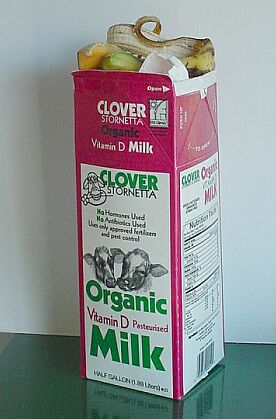
What's On My Food? is a searchable database designed to make the public problem of pesticide exposure visible and more understandable...we built this tool to help move the public conversation about pesticides into an arena where you don’t have to be an expert to participate.
_________
Here are real time world statistics on births/deaths and what's happening out there. In the time it took you to read this line, 17 people have been born. 2,000 tonnes of CO2 have been emitted worldwide.
The following is long and grim. Don't read it if you want a tranquil life.
http://www.fromthewilderness.com/free/ww3/100303_eating_oil.html
-------------------
Read it and you'll appreciate why becoming a serious gardener is one of the best things that you can do
for your financial health, the planet, for western civilization--plus it's a lot of fun and good for your body.
http://www.rainbowbody.net/Finalempire/FEchap1.htm (from THE FINAL EMPIRE: THE COLLAPSE OF CIVILIZATION AND THE SEED OF THE FUTURE by WM. H. KÖTKE http://www.rainbowbody.net/Finalempire/index.html)
|
Here's how much food an "average" American family eats in a year. A little bit of "legal" and "permissable" pesticide in every mouthful adds up to a lot. So what's wrong with a little pesticide residue anyway? Cancer, birth defects, learning disabilities and more...from pesticides? If you don't already know about this, the links below are a start in your education about pesticides. |
|
It's in your self interest to learn about these chemicals
So just what's in the non-organic food that you're eating?
This link shows you what there is in NON-organic food and its effects on you. |
|
The best explanation of what's wrong with industrial Factory Food that we've seen.
Fatal Harvest Myth 1: Industrial Agriculture will feed the world.
Fatal Harvest Myth 2: Industrial Food is Cheap
Fatal Harvest Myth 3: Industrial Food is Safe, Healthy and Nutritious
Fatal Harvest Myth 4: Industrial Food offers more choices
Fatal Harvest Myth 5: Industrial food offers more choices.
Myth 6: BIOTECHNOLOGY WILL SOLVE THE PROBLEMS OF INDUSTRIAL AGRICULTURE
Myth number 7: INDUSTRIAL AGRICULTURE BENEFITS THE WORLD
From the magnificent online book fruits of warm climates by Julia Morton:
"Tangerines generally do not have good keeping quality.... To prolong storage life, pads impregnated with the fungistat, diphenyl, have been placed in shipping cartons. The chemical is partly absorbed by the fruit and Federal regulations allow a residue of only 110 ppm. Storage trials have shown that washed and waxed 'Dancy' and 'Sunburst', with 2 pads per carton, absorbed more than 110 ppm in 2 weeks at 70º F (21º C)...Storage of unwashed 'Dancy' fruits for 2 weeks at 39.2º F (3º C) with 1 pad per carton showed diphenyl absorption below the legal limit. Unwashed 'Sunburst' fruits with 2 pads can be stored 4 weeks without absorbing excessive diphenyl. Early-harvested tangerines are less susceptible to decay but apt to absorb an excess of diphenyl."
But aren't government regulators protecting us from unsafe levels of chemicals in foods produced by big companies?
Read this for an introduction to the concept of the "revolving door" between
government service and employment contracts.
https://slcc.pressbooks.pub/attenuateddemocracy/chapter/chapter-39/
What's your body burden of toxic chemicals? Here's a catalog of whats in your blood:
The corporate clod clowns' chorus:
"Organic food is too expensive! Americans want cheap food..."
Here's the ultimate in cheap factory food. Nice and inexpensive. You're not going to eat this stuff are you? You want to really save money on food? Behind every McD's there is a grease drum of used oil. Why you could bob for french fry bits in that all daylong for free?
Summary: Soybean oil, the most widely produced and consumed edible oil in the U.S., could potentially impact neurological conditions like autism, Alzheimer’s disease, anxiety, and depression. https://neurosciencenews.com/soybean-oil-genetics-asd-15505/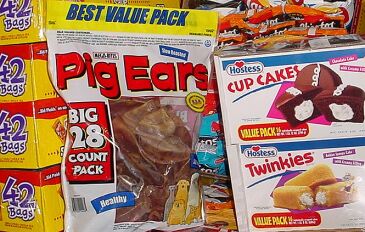
How you can protect yourself, your communities, our nation and the environment by eating organic food.
http://www.helpguide.org/life/organic_foods_pesticides_gmo.htm
Stop!
Just because it's labeled "Organic" doesn't mean you should accept it. You need to support the small local growers and processors that invented the organic food industry and who do good things with the money you spend. Here's an example of the bad guys that have muscled into the organic food market...
"...Cascadian Farms and Muir
Glen are owned by Small Planet Foods which is owned by
GENERAL MILLS, whose principal investors are PHILIP MORRIS,
EXXONMOBIL, GENERAL ELECTRIC, CHEVRON, NIKE, McDONALD'S,
TARGET STORES, STARBUCK'S, MONSANTO, DUPONT (weapons &
pesticides), DOW CHEMICAL (Agent Orange, breast implants,
napalm), PEPSICO, ALCOA ALUMINUM, DISNEY (exploit Third
World labor), TEXAS INSTRUMENTS (weapons: one of GW Bush's
top contributors), PFIZER. General Mills is also being
boycotted for animal rights abuse...".
from
What
We Need to Know About the Corporate Takeover of the
"Organic" Food Market
Here is a link that takes you to a chart of who owns what -you'll be surprised
Learn about ORGANIC CERTIFICATION FRAUD
Beyond Organic, the transition to Authentic Organic food: The highest quality and local origins
BACK TO GROWING YOUR OWN FOOD:
The Future is Abundant A great page about the philosophy and science of growing your own food in a sustainable fashion.
Here's what can be done by a dedicated and hardworking family. 1/10 of an acre in the middle of the city.
"Let's face it. Our world is in deep, deep trouble and we are the "troublemakers." We have to make real, difficult changes yesterday. Despite the obvious benefits, we are not going to recycle, compost, or talk our way out of this.
Our leaders, being politicians, are not leaders at all but are bound to be followers, who just won't be there for us in a crisis. So, it's up to me and you to make the choice of becoming responsible stewards of the earth."
|
|
<-------This back yard produced the following crops only 6 years after it was mere dirt, concrete and grass. On 1/10 acre = 4,360 square feet. Yields
in
pounds
from May 7 to November 11, 2001
Peas 70
(lbs)
Strawberries
19
Squash Summer Corn(ears
)
313
Beans
157
Mixed Berries
21
-yellow
21
Tomatoes
533
Peppers 145
Cucumbers
48
-green
49
Onions
57
Peaches
505
Plums 33 Squash Winter- Salad Mix
92
Figs 16 Pumpkins
60
spaghetti
94
Sunchokes
24
UPDATE: as of 12/31/03 this garden produced a total of 6,000 lbs of food in one year on 1/10 th of an acre--and remember the fruit trees haven't matured yet! Newer article: About this urban farm from the L.A. Times. January 25, 2007 July 2006-"Three Tons of Produce" San Francisco Chronicle article: |
less than $21 per day- per person. (2009 prices)
The
best overall description of why one should grow their own
food.
from an essay: THE TERRIBLE TIME OF DAY by Bill Mollison, 1981 This guy is the father of Permaculture and is a visionary and hero.
"Agriculture is a destructive system."
What are the strategies by which we don't need agriculture? Agriculture is a destructive system. Well, we need a lot more gardeners. Gardeners are the most productive, most hands-on sort of agriculturists. They always have been. There never has been any debate about it. When you make a farm big, you just accept a suddenly lower productivity and yield, but less people get it. That is why it is economically "efficient." When you talk about efficient farming of this order, you are talking about dollars. When you reduce the size of the owned landscape, providing you don't reduce the lots to less than a quarter of an acre, the agricultural productivity goes up. You get a lot of arguments to the effect that breaking up large farms into five acre blocks is uneconomic. Five acre blocks are. One to one-quarter acre blocks are not. They are highly productive.
Now gardeners. How many gardeners are there in the United States? Fifty-three percent of households now garden. They garden only 600 square feet on the average. They make something like $1.50 a square foot. These household gardens are producing 18% of the food in the United States, at a value almost equivalent to total agriculture."
------------------------------------------------------------------------------------------------------------
Achieving Food Independence on the Modern Homestead A well-written and concise series of steps that one can take to become an independent producer of their own food. Harvey and Ellen Ussery, 2005-2007
Introduction to Permaculture
|
"My own sense of homeland security is enhanced...when I know there is prime farmland not far from my home that provides me with healthy food. I feel more secure knowing that I possess enought rudimentary gardening and food skills to grow and process some of my own food and, even more reassuringly, there are still many nearby farmers who have the training and experience to operate commercial agricultural operations." Mark Winne |
Catching rainwater from your roof and becoming water self-sufficient.
Adventures in Urban Sustainability - Happy Earth. A beautiful alternate universe in New Zealand.
Learn about the informal economy "In England, you find people in the villages who have got fed up with the rat race and have started to farm their gardens and take part-time jobs... ." You think that it's not happening in America? At what point does one give up searching for a "Job", the opportunity to pay taxes, to commute, to do grunge work with no future? Many have given up. The Informal Economy is their salvation...
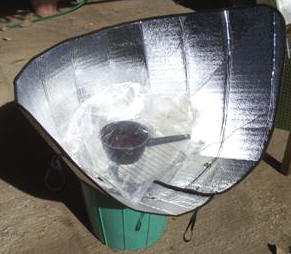
Why growing your own organic food is the best and most liberating action you can take for the future of our republic, the health of the real economy and as a means of hurting the really bad guys.
Did your grandparents ever give you seeds from the old country or the homestead? They might be the last of their kind on earth. How to save them for the future: Naturalizing heirlooms to reseed themselves
-----------------------------------------------------------------------------------------------------------
Seed Savers Exchange : an organization that saves and sells heirloom seeds and allows people who save their own to distribute them. There is has been a controversial firing of the originator of Seed Savers Exchange, Kent Wheatley, by the new board of directors. We no longer recommend them. Please find local organizations that do seed saving in your area. We recommend this seed saving group that can send you a kit to establish your own seed saving library in your home town.
http://www.richmondgrows.org/index.html
--------------------------------------------------------
Yet another reason to save your own heirloom seed from the Wall
Street Journal:
"Indeed, Monsanto has already agreed to apply its biggest
biotechnology breakthrough to Romo seeds. Scientists from Mr. Romo's
company, Empresas La Moderna SA,
have
placed in a lettuce a gene that gives it immunity to Roundup, a
Monsanto herbicide designed to kill any [new] green
vegetation. Now, 40% of all vegetables sold in the U.S. supermarkets
derive from Mr. Romo's seeds. Fill your plate at the salad bar of a
U.S. restaurant chain, and probably half of what you eat started life
as a Romo seed."
(and was probably drenched in
roundup pesticide).
United
States Department of Agriculture
site with lots of
information and bibliographies on
Heirloom
Vegetables.
But...there is a threat on the horizon to people that want to grow their own food:
And
now...
Here's how
corporate American agribusiness is going to make it
illegal to trade seeds of any kind, or even grow native
plants on your own
land
:
Think we're kidding? Welcome to the nightmare world of
the "approved plant list".
http://www.geocities.com/nowhitelist/index.html
STOP THE WHITE LIST!
Organic gardening a savior for Cubans starving under failed central planning
A fabulous eclectic page full of links about small scale, community and biointensive agriculture.From In-Context magazine.
Why food prices are climbing and how you can protect your community and family from this threat.
This is how much an average American family of 4 eats a year: (Yes, it's the same picture you saw before.)
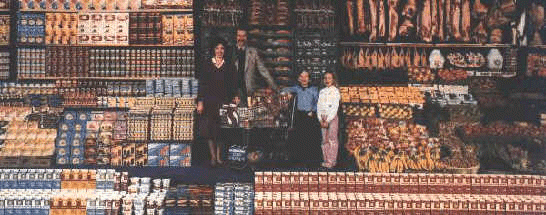
How will they survive if the "just in time" 3 days from- farm- to- table supply lines of food are interrupted by Natural or man-made disaster?
EATING FOSSIL FUELS The definitive short article on cheap petroleum = cheap food.
So what happens when a country is cut off from petroleum-fertilizer-natural gas and agricultural supplies? North Korea starves to death-except for the Communist Party leaders of course.
Cuba after the centrally run economy was cut off from the Soviet Union did things differently and with great success.
How erosion caused by conventional farming is destroying the world's ability to feed itself. |
|
![]()
Books about gardening and ecology online. Download them. Free, that's a good price for invaluable knowledge.
http://www.soilandhealth.org/01aglibrary/01aglibwelcome.html
_________
Are you discarding edible parts of vegetables and not knowing it?
Secondary Edible Parts of Vegetables
http://aggie-horticulture.tamu.edu/extension/newsletters/vpmnews/apr02/art4apr.html
----------------
A phenominal history of agriculture from Purdue University INTERGARDEN an incredibly through and well constructed set of links to
PERMACULTURE & REGENERATIVE AGRICULTURE sites.
Gardenweb Forums A place to learn from others. Enormous number ot topics and regional subjects. Unfortunately this is loaded with ads and ads served from outside advertisers and so it's quite slow to load.
U.S.D.A. general site about vegetable gardensLong (but useful) explanations of all factors involved for the uninitiated.
Fatal Harvest; the tragedy of Industrial Agriculture
"We know that the massive use of synthetic fertilizers to create artficial fertility has had a cascade of adverse effects on natural soil fertility and the entire soil system. Fertilizer application begins the destruction of soil biodversity by diminishing the role of nitrogen-fixing bacteria and amplifying the role of everything that feeds on nitrogen. These feeders than speed up the decomposition of organic matter and humus. As organic matter decreases, the physical structure of soil changes. |
Lovely study from Denmark:
In Denmark, during World War II, due to a food crisis, many domestic animals were slaughtered and their grain rations fed to humans. Consumption of white bread was stopped, and replaced by a bread made from a wholemeal of 67% rye, 21% oats, and 12% bran, called Kleiebrot. Consequently, the death rate fell to the lowest level ever registered in Europe. There were significant declines in the incidence of high blood pressure, heart disease, kidney problems, diabetes, and cancer, and there were no cases of digestive troubles (Marine & Van Allen, 1972; Day, 1966).
Misc stuff:
Magnificent online course about grafting Yes, you can get a peach to grow on a plum tree.
PLANT PROPAGATION Magnificent online course from Ohio State University.
How you can create a rainforest by planting diverse species:
Gardening as an anarchist plot. A brilliant site with all manner of practical hands-on things.
Avant-Gardening , a New Mexico Organic garden site with an interesting design philosophy
Knox Cellers: a father/daughter team raise wild bees. Check out the Urban Farmer newsletter link at the bottom of their page.
Huge page of resources having to do with homesteading, food storage, tools etc. The Walton Feed Pages
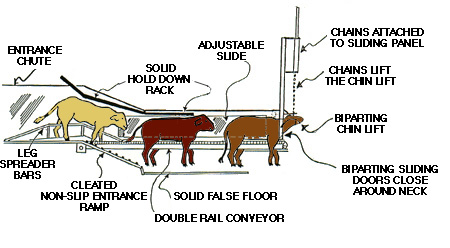
Yet more reasons to avoid factory food:
Hidden agenda in food irradiation?
Section on food irradiation is 1/2 down the article.
It is true that if a food irradiation industry can be created, it will soon sop up all available cesium-137, and thus create a demand for more. This would require the government to start releasing the cesium which would become the responsibility of states, thus relieving the federal government of an enormous radwaste problem. processing nuclear waste as a food treatment, instead of burying it in the ground somewhere...
Consumerism's bad effects
O. C. Accomplishes? Active Resistance Hands on methods
2 Families compared our personal consumer choices
consumption chart resources to overcome consumerism
radical anti-consumerism cars How to raise trees
Corporate officers and their interlocking interests
Click here to tell a friend about The Overcoming Consumerism website
e-mail us :

***
